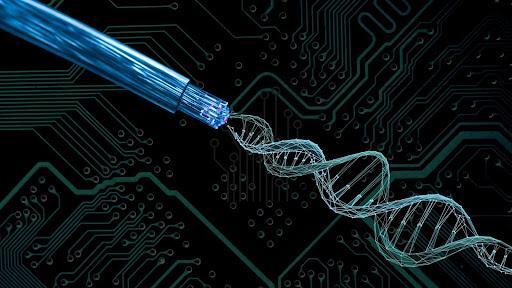
DNA’s Electron Flow May Unlock Future Biocompatible Electronics
The world is on the cusp of a revolutionary breakthrough in the field of electronics. Researchers have made a groundbreaking discovery that could lead to the creation of smaller, more efficient, and biocompatible devices. By studying the electrical properties of DNA, scientists have uncovered novel pathways for electron transport, which could pave the way for DNA-based electronics.
DNA, the molecule responsible for storing genetic information in living organisms, has long been considered a fascinating material for its potential applications in various fields. However, its unique electron-vibration dynamics have only recently been explored, revealing its potential as a building block for future electronics.
A recent study published in the journal Nature Communications has shed light on the interaction between electrons and molecular vibrations, or phonons, in DNA strands. The researchers found that these interactions create novel pathways for electron transport, allowing for more efficient and controlled movement of electrons through the DNA molecule.
The study, led by Dr. Francesco Forni, a researcher at the University of Cambridge, focused on understanding the movement of electrons through DNA strands. The team used advanced computational methods to simulate the behavior of electrons and phonons in DNA, allowing them to visualize the interactions between these two fundamental components of the molecule.
The results of the study showed that the interactions between electrons and phonons in DNA strands create a unique environment that facilitates the movement of electrons. The phonons, or molecular vibrations, act as a “conduit” for the electrons, allowing them to flow through the DNA molecule with ease.
This finding has significant implications for the development of DNA-based electronics. By harnessing the unique electron-vibration dynamics of DNA, researchers can create devices that are smaller, more efficient, and biocompatible.
In traditional electronics, the movement of electrons is typically facilitated by metal-based materials, such as copper or silver. However, these materials have limitations, including high power consumption and toxicity. In contrast, DNA-based electronics could offer a more sustainable and biocompatible alternative.
The potential applications of DNA-based electronics are vast and varied. For example, DNA-based sensors could be developed to detect diseases, pollutants, or other substances. DNA-based transistors could be used to create ultra-small and energy-efficient electronic devices. DNA-based circuits could even be used to create intelligent textiles or biomedical implants.
While the potential benefits of DNA-based electronics are significant, there are still many challenges to overcome before these devices can become a reality. For example, researchers need to develop methods to fabricate and integrate DNA-based components into larger electronic systems. Additionally, the stability and scalability of DNA-based electronics need to be ensured.
Despite these challenges, the discovery of novel pathways for electron transport in DNA strands is a significant breakthrough that could pave the way for the development of DNA-based electronics. As researchers continue to explore the electrical properties of DNA, we can expect to see innovative applications of this technology in the years to come.
In conclusion, the study of DNA’s electron flow has opened up new possibilities for the development of biocompatible electronics. By leveraging the unique electron-vibration dynamics of DNA, researchers can create smaller, more efficient, and sustainable devices that have the potential to revolutionize various fields, from healthcare to consumer electronics.






